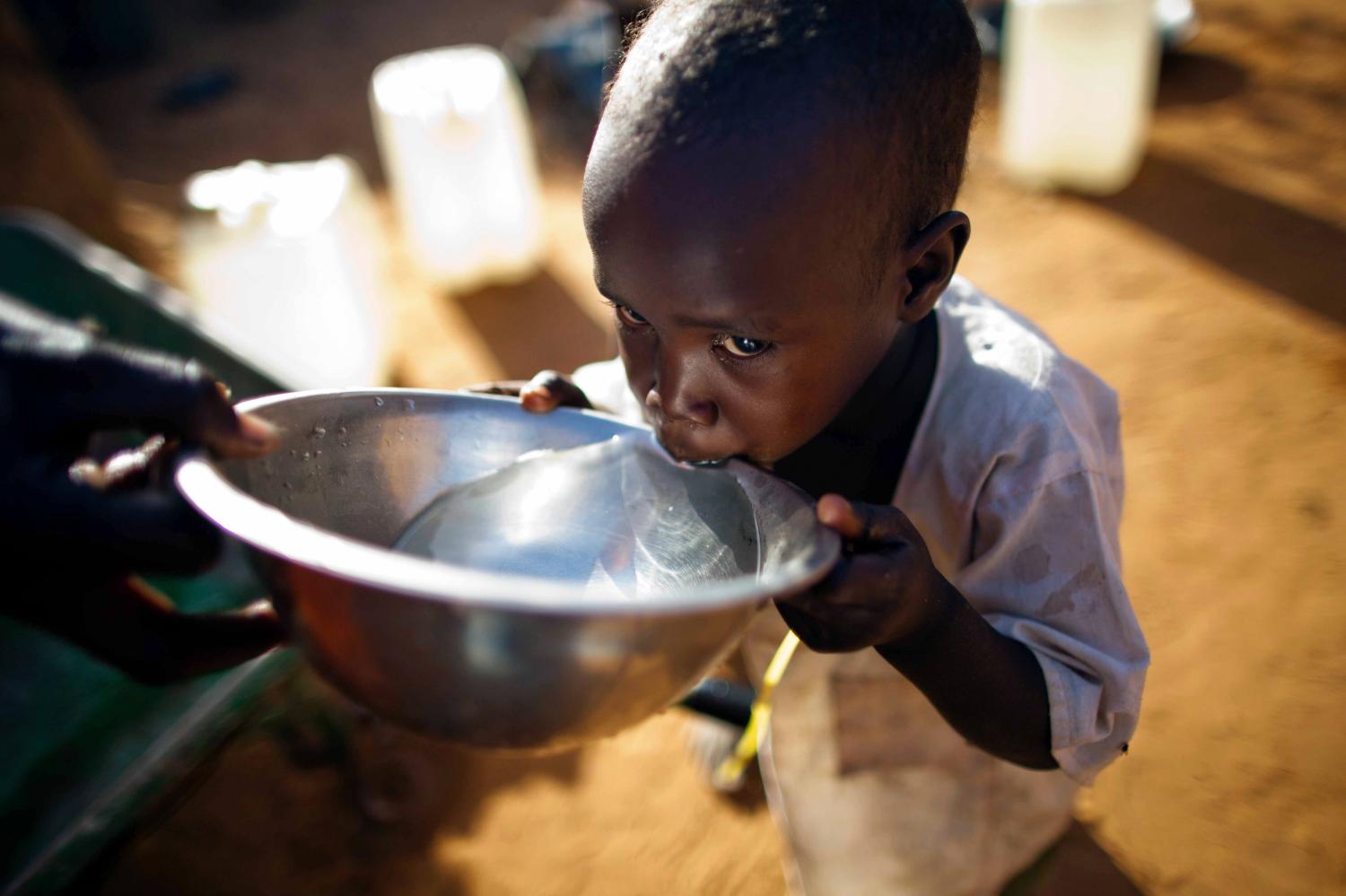U.S. development assistance to Africa creates many opportunities for the United States beyond humanitarian aid, such as strategic national security partners and increased economic prospects. George Ingram and Steven Rocker recommend several strategies for the U.S. government to better utilize and direct its foreign assistance to the region.
This chapter is part of Top Five Reasons Why Africa Should Be a Priority for the United States. Read the full report here and tell us why you think Africa matters to the U.S. Join the conversation on Twitter using #AfricaMatters.
The Priority
Total bilateral U.S. development assistance from the U.S. Agency for International Development (USAID) and the State Department to sub-Saharan Africa nearly quadrupled from roughly $1.94 billion in FY2002 to an estimated $7.08 billion in FY2012.[1] The rapid uptick in U.S. development assistance to the region was largely driven by global health spending, specifically the President’s Emergency Plan for AIDS Relief (PEPFAR), which concentrates HIV/AIDS resources primarily to 14 countries, 12 of which are in sub-Saharan Africa.[2]
Currently, USAID operates 27 bilateral and regional missions in sub-Saharan Africa, which in FY2012 provided bilateral assistance to 47 sub-Saharan African countries. The Africa region’s top five recipients of U.S. assistance in FY2012 were Kenya, Nigeria, Ethiopia, Tanzania and South Africa.[3]
Beyond global health, the U.S. is the leading donor of humanitarian aid to sub-Saharan Africa, particularly in the area of emergency food aid.[4] The Obama administration has also made assistance to agriculture sector development a key priority in recent years through its Feed the Future program, a global hunger and food security initiative.
In June 2012, President Obama signaled his development priorities toward the region with the release of the White House’s U.S. Strategy toward Sub-Saharan Africa. Economic growth, food security, public health, women and youth, humanitarian response and climate change are explicitly listed in the Obama Strategy as U.S. priority areas to further accelerate development progress in the region.
Why is it Important for the U.S.?
U.S. development assistance funds programs on the ground in ways that bring government agencies and American organizations and businesses into collaborative activities with Africans who are trying to lift their countries onto a higher plane of social, political and economic development. The region warrants sustained U.S. engagement for a range of humanitarian, national security and economic reasons.
Humanitarian interests
As a clear sign of America’s moral leadership around the globe, the U.S. has historically been and remains the leading donor of humanitarian assistance to the region. In response to the Horn of Africa drought and subsequent famine in the summer of 2011, for example, U.S. emergency food aid programs provided $740 million to Ethiopia, Kenya, Somalia, South Sudan and Sudan (according to the U.S. State Department). It is fully consistent with American values to continue to respond vigorously and generously to emergencies in the region.
National security interests
Continued terrorist activities in Somalia, the recent insurgency in Mali, and the potential threat of Boko Haram on Nigeria—the U.S.’s largest trading partner in sub-Saharan Africa [5]—emphasizes that the U.S. has important national security interests in the region. Development assistance from the State Department addresses U.S. national security concerns by funding counterterrorism partnerships between the U.S. and African militaries as well as training for African soldiers to conduct peacekeeping missions in countries like Sudan, Somalia, the Democratic Republic of the Congo and Liberia.
Economic interests
Sub-Saharan Africa is a region of great economic promise. From 2001-2010, six of the fastest growing economies in the world were in the region.[6] In fact in 2011, foreign direct investment to sub-Saharan Africa amounted to more than global bilateral official development assistance in 2011.[7] Other countries, including China, are recognizing and acting on the increasing commercial opportunities in sub-Saharan Africa. A recent GAO report found that China’s total trade in goods over the past decade increased faster than and surpassed U.S. trade in the region in 2009.[8]
What is the Opportunity for the U.S.?
- Sustainable health systems: The vast majority of U.S. global health assistance to sub-Saharan Africa is used to finance the delivery of health services, which is not sustainable in the long term. Greater focus needs to be directed to building sustainable health systems so African countries can increasingly meet their own needs.
- Disaster preparedness and resilience: The U.S. is the leading donor of official humanitarian aid to sub-Saharan Africa. However, very little assistance is allocated toward disaster prevention and preparedness.[9] By focusing more resources and expertise toward these areas, the U.S. could contribute in the long term to achieving a reduction in loss of life and the need for large international responses to disasters.[10]
- Economic growth: The U.S. should leverage its assistance and other policies to stimulate economic growth in sub-Saharan Africa. Members of Congress and U.S. government officials should engage the Export-Import Bank, Department of Commerce, Overseas Private Investment Corporation, U.S. Trade and Development Agency and the U.S. Trade Representative to ensure that the U.S. is providing a range of government policies and programs to encourage equitable economic growth and commercial opportunities for U.S. businesses in the region.
- Democratization and good governance: The U.S. needs to devote greater attention and support toward governance in sub-Saharan Africa, including improving governmental collection of revenues and transparent budgeting as well as building the capacities of civil society and legislative bodies. In FY2011 and FY2012, U.S. global health requests for sub-Saharan Africa averaged $4.82 billion per year while funding requests for rule of law and human rights, good governance, political competition and consensus-building and civil society under the USAID-managed Development Assistance account averaged only $75.73 million over the same period.[11]
Endnotes
[1] Alexis Arieff et al, “U.S. Foreign Assistance to Sub-Saharan Africa: The FY2012 Request”, Congressional Research Service Report R41840, May 20, 2011, 5
[2] Sessions, Myra, “Overview of the President’s Emergency Plan for AIDS Relief (PEPFAR)” Center for Global Development
[3] Congressional Budget Justification, Foreign Assistance Summary Tables, FY2013,15 http://www.state.gov/documents/organization/ 185016.pdf.
[4] Ted Dagne, “Africa: U.S. Foreign Assistance Issues”, Congressional Research Service Report RL33591
[5] “Africa”, Office of the United States Trade Representative. http://www.ustr.gov/countries-regions/africa
[6] “Daily chart: Africa’s impressive growth”, The Economist, January 6, 2011. http://www.economist.com/blogs/dailychart/ 2011/01/daily_chart.
[7] World Investment Report 2012: Toward a New Generation of Investment Policies, United Nations Conference on Trade and Development, Geneva: United Nations, 2012; see also “Development: Aid to developing countries falls because of global recession”, Organization of Economic Co-operation and Development, April 4, 2012
[8] Government Accountability Office. “Sub-Saharan Africa: Trends in U.S. and Chinese Economic Engagement” February 2013
[9] Global Humanitarian Assistance. “United States – Country Profile.” Global Humanitarian Assistance. http://www.globalhumanitarianassistance. org/countryprofile/united-states.
[10] USAID Policy Framework 2011-2015. Washington: U.S. Agency for International Development, 2011.
[11] FY2013 Congressional Budget Justification Foreign Operations Regional Perspectives Annex, 3-4
The Brookings Institution is committed to quality, independence, and impact.
We are supported by a diverse array of funders. In line with our values and policies, each Brookings publication represents the sole views of its author(s).




